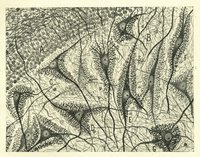The SCOPE project ended on March 31st, 2020.
For additional information about the current support to Partnering Projects, please contact partnering@humanbrainproject.eu

Supporting & communicating the successes of HBP Partnering Projects
Download the Scope flyer for printable information.
How does SCOPE support the Partnering Projects and Associated Members?
SCOPE provides a valuable opportunity to ensure that Partnering Projects can be properly promoted and integrated by leveraging additional resources and extend the Flagship’s outreach and ability to benefit the research community in Europe and internationally. The resources allocated to the Core Project do not cover direct interactions and coordination with Partnering Projects as proposed in here in the SCOPE project.
What will SCOPE do?
SCOPE will, in the first place, raise awareness amongst Partnering Projects about activities that are organised and planned by the Core Projects. Networking is an essential element and an efficient tool for building a sense of community, for sharing research results and for developing future collaborations and research plans.
SCOPE will provide support to institutions and researchers involved in Partnering Projects to efficiently organise their interactions amongst themselves and with the Core Projects, through their participation in meetings, workshops or other relevant activities organised by the Core Project of each Flagship, and to help them create an “ecosystem” where the Core Projects co-exist and interact with the Partnering Projects.
SCOPE is closely interacting with the HBP Flagship Core Project in order to identify the most relevant opportunities for support to Partnering Projects’ members and Associated Members to interact and attend networking events organised by the HBP Flagship Core Project.
More information on the eligibility and the type of support can be found here: SCOPE support to HBP Flagship Partnering Projects.
How will SCOPE help communicate the Partnering Projects’ work?
SCOPE provides support and dissemination for an active promotion of partnering opportunities. Researchers involved in Partnering Projects will benefit from the enhanced exposure of their project among the general public and in the media.
SINC, the science news agency of FECYT, offers communication support to the Partnering Projects in order to foster the impact of the project activities and research results of these projects. SINC will develop news, reports, interviews or audio-visual materials around the work of the researchers involved in HBP Partnering Projects.
This scientific information will be posted on the HBP website and social media, on the SINC website and their social networks, and on the SCOPE social media.
What about organising networking events?
SCOPE will organise meetings in conjunction with main Flagship events (HBP Summit, etc.), in order to discuss matters of interest to Partnering Projects, facilitate interactions between themselves and with the Core Project.
Partnering Projects and their respective Associated Members will have priority access to the different Flagship open events, schools and educational activities and they will be encouraged to act as co-organisers of the different scientific technology and innovation meetings.
What support is there for governance?
In regards to governance, SCOPE will provide support to the representatives of the Partnering Projects in the governance structures.
All the dissemination, networking and governance events will be announced in the HBP website and social media, and on the SCOPE social media.
What is SCOPE?
The SCOPE project aims to answer the challenge of coordinating and supporting the partnering environment of the two Future and Emerging Technologies (FET) Flagships, Graphene and the Human Brain Project, to ensure their visionary and highly ambitious goals are achieved.
What does SCOPE stand for?
Support and Coordination of the Partnering Environment for FET Flagships. It is a three year project, funded by the European Commission. It began work in January 2017.
How does it fit within the wider HBP Project?
SCOPE will be a facilitator between HBP Core Project and its Partnering Projects. The SCOPE project will be an ongoing support to engage with and integrate Partnering Projects to the Flagship initiatives, draw the benefits of being part of it and assess their added value.
Who is SCOPE?
The consortium of the project is composed by FECYT (Spanish Foundation for Science and Technology) who is the Coordinator, EPFL (Swiss Federal Institute of Technology in Lausanne) creating the link with the HBP and ESF (European Science Foundation) for the Graphene Flagship.
Who else will SCOPE work with?
SCOPE will also work with FLAG-ERA, the TAIPI project, the Flagship Board of Funders, the Flagship Governance Forum, and the SCOPE Advisory Committee (formed by a representative from each of the FET Flagships, the Coordinator of FLAG-ERA and the Coordinator of TAIPI project). Together they will provide guidance and insights regarding Partnering Projects in the context of the overall Flagship environment with focus on partnering mechanisms.
Contact details:
SCOPE Project
E-mail: scope_project@fecyt.es
Social media:
Facebook
Quick links
![]() Guidelines for the SCOPE travel grants (315.7 KB)
Guidelines for the SCOPE travel grants (315.7 KB)
PP news

SloW Dyn: ‘Waves’ of neural activity give new clues about Alzheimer’s
MoCoTi: ‘Low cost android’ to study the brain
CANON: The brain is still ‘connected’ during non-REM sleep
MULTI-LATERAL: Brain images refute language domain theory from the 60s
CHAMPMouse: Investigating circuitous networks of connections
FUSIMICE: New ultrasound technique shows the brain of rodents in action
MULTI-LATERAL: How To Break The Glass Ceiling In Neuroscience?
CANON: Strengthening collaboration to model cortical function
ROBOTBODYSCHEMA: The android with a sense of touch
SCOPE: Grants available to foster strategic alliances in neuroscience and neurocomputation
SloW Dyn: Studying consciousness had been seen as mystical or unscientific
SCOPE: Open Day: Discovering strategic and scientific alliances in neuroscience and neurocomputing
CerebNEST: An artificial cerebellum that also learns to blink
ROBOTBODYSCHEMA: The Neurorobotics Platform will help us to connect our brain model of the peripersonal space to the humanoid body
CerebNEST: New neuronal model with potential to tackle spinocerebellar ataxias disease
Brains on Board: These Insect-Inspired Robots Don't Need GPS For Orientation
SHADOW ROBOT COMPANY: A Coming Generation Of Robots Will Have More Human Hands



